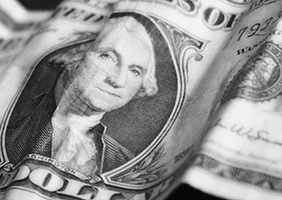Newsroom
NAFCU economist explains new stress test scenarios
 The Federal Reserve last week released updated hypothetical scenarios to use in 2020 stress test exercises. These scenarios are used by the NCUA for credit union stress tests; NAFCU Chief Economist and Vice President of Research Curt Long explained what's different.
The Federal Reserve last week released updated hypothetical scenarios to use in 2020 stress test exercises. These scenarios are used by the NCUA for credit union stress tests; NAFCU Chief Economist and Vice President of Research Curt Long explained what's different.
"As compared to a year ago, the Fed's worst-case scenario is even more severe on several key dimensions, like real GDP growth and personal income growth, but also includes a quicker recovery in Treasury rates," Long said. "Interestingly, the baseline scenario shows only a 20-basis point increase in the 3-month Treasury rate over the entire 13-quarter forecast horizon.
"Although the Fed cautions against any explicit links between these forecasts and the FOMC, this would be consistent with NAFCU's view that the committee sees the short-term rates as being close to neutral, with a high hurdle required to move rates in either direction," he added.
Long also noted that there's a technical change in which the Fed only provides baseline and severely adverse scenarios, no longer providing an adverse scenario. NAFCU will work with the NCUA to ensure credit unions understand how this will be handled.
Other changes in the updated stress test scenarios include a focus on leveraged lending at large banks and will also require banks with substantial trading or processing operations to incorporate a counterparty default scenario component.
Last year, Fed Chairman Jerome Powell and Vice Chair for Supervision Randal Quarles discussed the benefits of stress testing in the post-financial crisis era and offered ways to improve them. The two stressed the need to ensure stress tests evolve with the changing financial system and prepare banks effectively for unexpected risks and economic downturns.
Share This
Related Resources
CFPB Orders Bank of America to Pay $12 million
Examination & Enforcement Home-Secured Lending
Blog Post
Equalizing Immigration Status
Consumer Lending Examination & Enforcement BSA
Blog Post
CFPB Issues Advisory Opinion Regarding Requests for Information
Examination & Enforcement
Blog Post
Peering into the Future: 2023 Supervisory Highlights (Pt. 2)
CFPB , Examination & Enforcement
Blog Post
Get daily updates.
Subscribe to NAFCU today.
